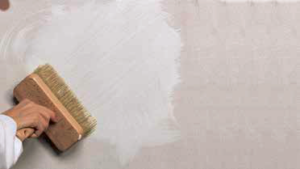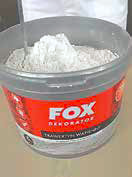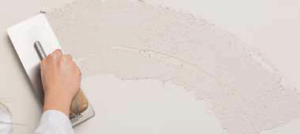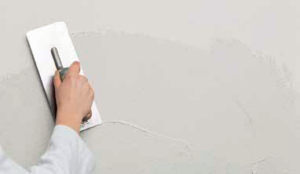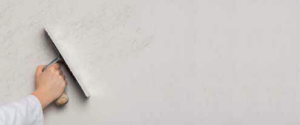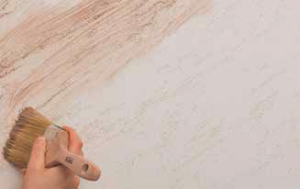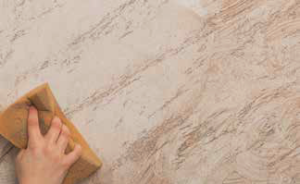|
Lime Travertine application – step by step |
|
|
|
STEP 1 Substrate preparation The substrate should be: appropriately sound, stable, cleaned of layers which can impair the product bonding, particularly of dust, dirt, lime, oils, grease, residues of paints, etc. Primed – with Fox Dekorator Bonding Primer when the substrate is characterised by low absorptiveness or smooth. |
|
|
STEP 2 Product preparation The dry mix should be mixed with water in ratio: extra fine – 3.0 up to 3.5 l; fine – 3.25 – 3.7 l; coarse – 2.6 l of water for 5 kg of dry plaster. Leave the mixed mass to rest for 24 hours, keep the packaging closed. Remix afterwards, add a little bit of water to reach expected consistency, if needed. |
|
STEP 3 Sample application Plan the sequence and technique of application of subsequent coats in advance, check the final effect on a small sample first! It is extremely important to keep the same technique of application and to avoid breaks. Always prepare the sample individually and show to the investor – the final effect depends on the person applying the product mostly. |
|
|
|
STEP 4 Application of the first coat Apply Lime Travertine upon primed substrate, keep the coat thickness same as the grain size. Try to divide the application site into fields 1 – 2 m² large – float the drying plaster with the trowel edge before application of the next field. Leave the coating to dry (approx. 12 – 24 hours). |
|
|
STEP 5 Application of the second coat Grind the surface with sand paper in order to remove any irregularities before application of the second coat. Dedust the surface with a soft paintbrush. Thoroughly moist the surface with water with a paintbrush or a roller. Apply the second coat upon the moist surface, keep the coat thickness same as the grain size. Slightly smooth the surface. |
|
|
STEP 6 Scores When the second coat keeps drying, irregular pattern of horizontal and vertical scores is formed with the trowel edge led at an angle of 90°. Float the surface with a trowel afterwards. During floating the plaster pores are sealed and areas free of scores obtain characteristic satin gloss. If the scores get coated during floating, one should reduce the trowel pressure or let the surface dry a little bit more. |
|
STEP 7 Application of varnish Dilute Fox Dekorator Decorative Varnish with water (ratio 2:1) and coat the whole surface initially. |
|
|
|
STEP 8 Application of coloured varnish After approximately 4 hours of drying the coloured varnish can be applied. The tinted Decorative Varnish is applied with a paintbrush led along the scores, from top to bottom, with thin strips. |
|
|
STEP 9 Washing Wash the tinted varnish from smooth areas free of scores immediately, use a sponge frequently sluiced with water. This way most of the colour is left in the scores and gaps which forms the decoration expected appearance. |
|
Fox Dekorator Travertine as alternative to stone
|

Original text: Magdalena Kroczak, ATLAS Group
English text: Michał Gosławski, ATLAS Group












